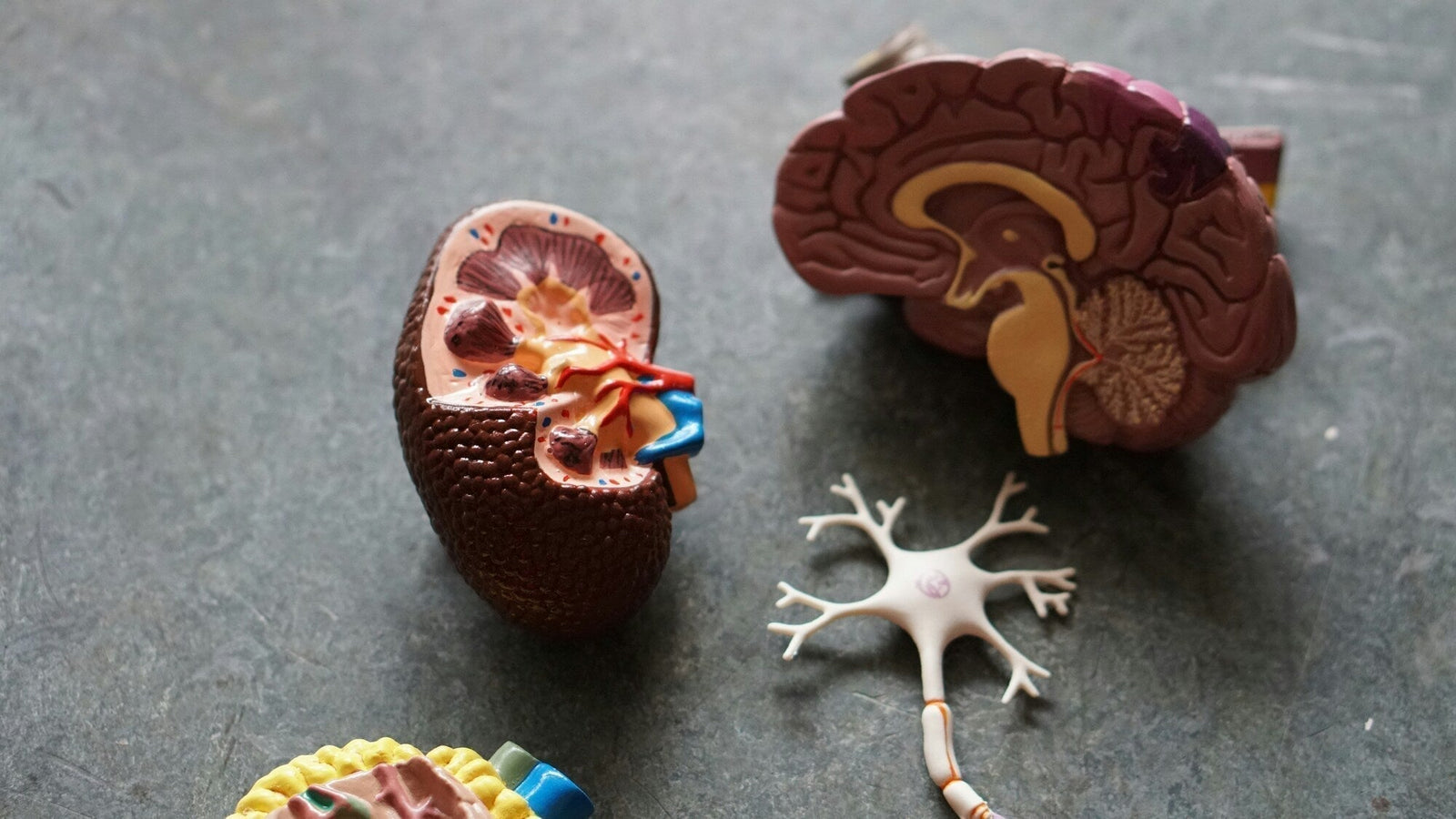Your Cart is Empty

April 29, 2019 6 min read
Photo credits: blog.pennlive.com
Lots of people think that getting older is a reason to embrace a less active lifestyle. However, maintaining high activity as we get older can not only reduce the impact of a considerable number of factors which accelerate the aging process, but also improve the quality of life, largely in the form of maintaining stronger muscles to better cope with everyday mobility.
We all get older, no arguing with that, and an inevitable decline in almost all biological functions is taking place. That's a reality. Yet, hitting the goals of successful aging - that is, to get older with a minimum risk of disease and disability, with high mental and physical ability, and to preserve life activity - is what we all seek but not what we all work at.
When discussing the countless benefits of keeping a high level of physical activity, we don’t just emphasize physical health. High physical activity also promotes self-esteem by keeping as youthful a look as possible, improving mood, reducing anxiety and depression, and allowing enjoyment of our golden years with the best physical and mental health ever.
Using the concept of “the best investment should be in our health” we are going to emphasize more evidence-proven merits of maintaining a high level of activity as we get older.
Sarcopenia is the gradual loss of muscle mass and strength with aging, affecting 8.8% of young old women and 17.5% of old old men. Sarcopenia impacts the quality of life of older adults largely in terms of mobility and performing everyday life activities (1).

Although reduced physical activity level with aging seems to play a key role in producing sarcopenia, exercise, specifically resistance (weight) training, has been demonstrated to be an effective countermeasure, arresting the decline and substantially improving physical function (2).
The Society for Sarcopenia recommends that combining exercise with adequate protein and energy intake prove to be key factors for preventing and managing sarcopenia (3).
Given that collagen production decreases more than 5-fold from childhood to adulthood (4), collagen supplements are considered a cornerstone in the dietary recommendation for preventing and managing sarcopenia because collagen peptides are a rich source of arginine and glycine, both known to be important substrates for the synthesis of creatine in the human body - creatine is a key protein of muscle mass (5).
Additional benefits conferred by non-GMO collagen supplements over other protein sources is the positive effect of collagen supplements on microcirculation and the resultant enhancement in the delivery of amino acids to muscles with eventual improvement of the anabolic response of muscle mass.

For that, Steffen Oesser, the Director of the Collagen Research Institute (CRI) in Germany, with his colleagues, designed a randomized controlled trial to investigate the effect of all-natural collagen peptides supplementation in combination with resistance training, on increasing muscle strength in elderly sarcopenic men. Data obtained obviously demonstrated that compared with placebo, collagen peptides supplementation in combination with resistance training significantly improved body composition by increasing Fat-free mass (FFM), muscle strength, a loss in fat mass (FM), and increased muscle mass and motor control in subjects with sarcopenia.
Statistics assure us that osteoarthritis affects more than 80% of those over 75 years old, with signs of osteoarthritis present in almost all people by the year of 65, and that approximately 20% will be affected by osteoarthritis before the age of 45 (6).
Osteoarthritis is associated with unremitting pain and limitations of mobility, as well as limitations of leisure and social activities which overall affect individuals’ physical and psychological aspects of health.
Actually, one of the very critical issues when considering the consequences of osteoarthritis in older adults is the risk of falls. The risk of falling is reported to increase by almost 2.5 times in those with lower extremity osteoarthritis (7).
Clearly, the impact of falls on older adults is serious and one of the most important issues that extensively affects the quality of life of older adults. Managing osteoarthritis is a priority in minimizing the risk of falling. Aerobic, strengthening, aquatic, and Thai chi are recommended exercises for improving pain and function in people with OA (8).
The effectiveness of exercise in reducing pain and improving functioning in osteoarthritis of the knee (OAK) is well established (9) and when considering the pathological mechanism involved in osteoarthritis and the predominant breakdown of collagen in the extracellular matrix of cartilage, combining the effect of exercise with supplementing collagen is invaluable for managing such conditions.
12 weeks of resistance training in osteoarthritis patients revealed that a morphological adaptation of muscle collagen takes place in favor of a strengthened extracellular matrix surrounding individual muscle fibers (10) which reflects the importance of strengthening underline structures that support cartilage mobility as a target to enhance the net positive effect of exercise on relieving osteoarthritis.
Take our quiz and find which supplements your body is craving.

In this regard, a double-blind, placebo-controlled, randomized, clinical study on the effectiveness of collagen peptides powder on osteoarthritis revealed that a significant amount of the collagen peptides could be detected in cartilage tissue, indicating an accumulation of these peptides within the connective tissue with an influence on cell metabolism. Furthermore, Pro–Hyp in collagen peptides regulates chondrocyte differentiation and plays a key role in the maintenance of mature chondrocytes in cartilage (11). Given that collagen proved to be superior to glucosamine sulfate in terms of efficacy and tolerance in managing Osteoarthritis (12), and that collagen production declines as we get older, recommendations on combining the effect of fat-free collagen supplements - to neutralize a natural decline in collagen production - with exercise for improving the clinical condition of osteoarthritis patients, is promising, although yet to be clinically proven.
After identifying the importance of exercise, it is important to establish a process of engaging in a higher level of physical activity, as there are virtually many barriers and restrictions on the involvement of older individuals in physical activity, especially for those who have had a less active lifestyle for many years. However, it’s never too late, and customized exercise programs can be provided by experienced trainers who take into account changes in the functioning of the body resulting from the aging process.

Photo credits: express.co.uk
The World Health Organization (WHO) recommends the gradual involvement in exercise programs, and states that simple forms of exercise, such as walking, dancing, swimming, cycling or even exercise in bed can be a good start. In addition, different forms of exercise: stretching, aerobics, and relaxation should be used with a reasonable time of recovery to hit the maximum benefit of establishing an active lifestyle.
In conclusion, the importance of maintaining an active lifestyle is highly recommended, in part to slow down the deteriorating effects of the aging process on joints, tendons, and muscles and in part to keep an active lifestyle with a high ability to perform everyday tasks and get the most out of enjoying the golden years. Moreover, considering a clean-sourced collagen supplement - the elixir of youth that can augment the positive effects of exercise on different aspects of health - is priceless.

March 03, 2025 7 min read
Discover how Bryan Johnson, a tech entrepreneur turned biohacker, uses cutting-edge science and personalized genetic testing to revolutionize health and longevity. Learn how biohacking, from diet to mental health practices, can help you live longer and healthier, with practical strategies to optimize your well-being. Find out more about genetic testing, and ways to implement results into your wellness routine.

February 19, 2025 6 min read
Explore the remarkable health benefits of medicinal mushrooms like Lion’s Mane, Turkey Tail, Chaga, and Reishi. These superplants support immune function, reduce inflammation, and boost brain health. Learn about Amandean's Brain Health supplement, combining Lion’s Mane, Magtein, and Alpha-GPC for optimal cognitive performance.

February 10, 2025 7 min read
Unlock your brain’s full potential with Amandean’s Brain Health Supplement. Packed with Magnesium L-threonate (Magtein), Lion’s Mane Mushroom, and Alpha-GPC, this formula enhances memory, focus, mood, and cognitive longevity.